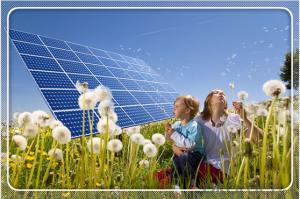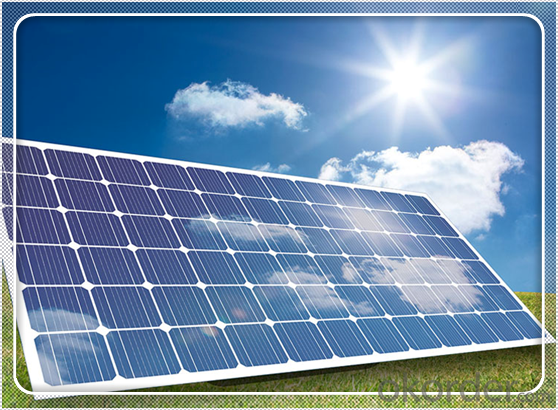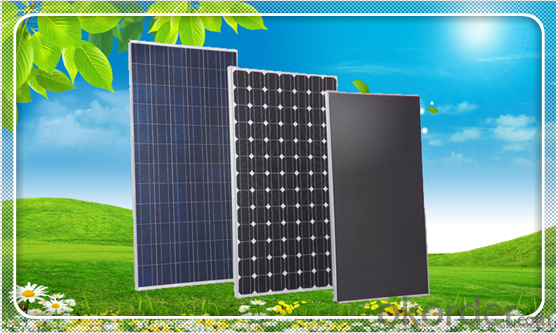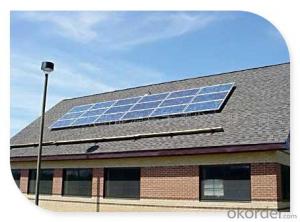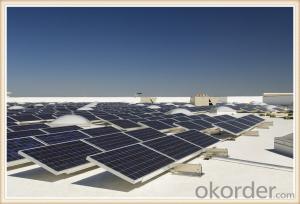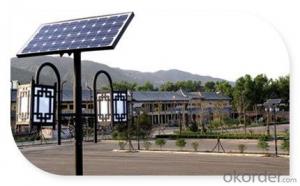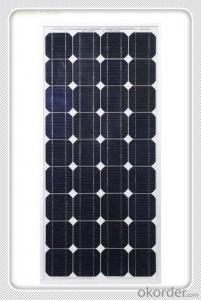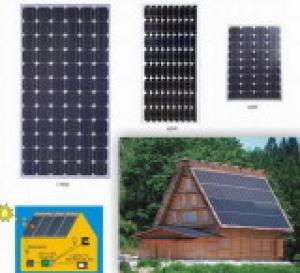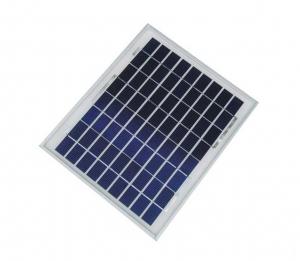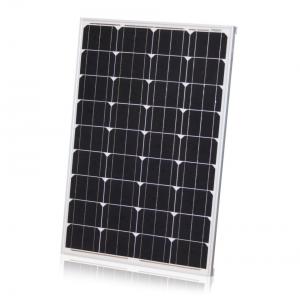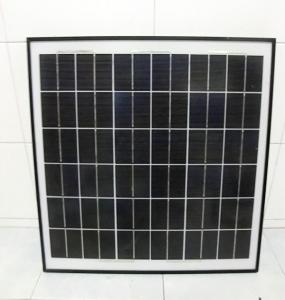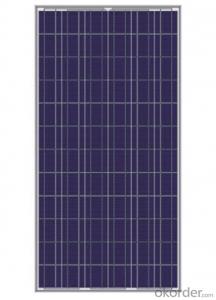Los Angeles Solar Panels - 110w Efficiency Photovoltaic Chinese Solar Panels for Sale 5-200w
- Loading Port:
- China main port
- Payment Terms:
- TT OR LC
- Min Order Qty:
- 10000 watt
- Supply Capability:
- 100000 watt/month
OKorder Service Pledge
OKorder Financial Service
You Might Also Like
Specification
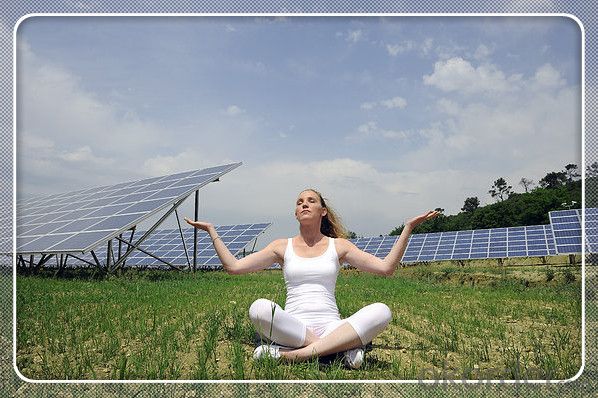
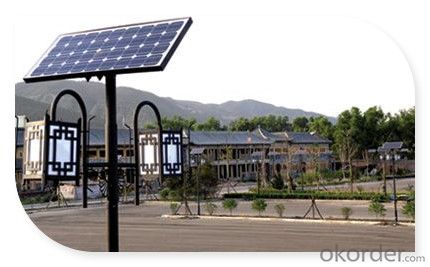
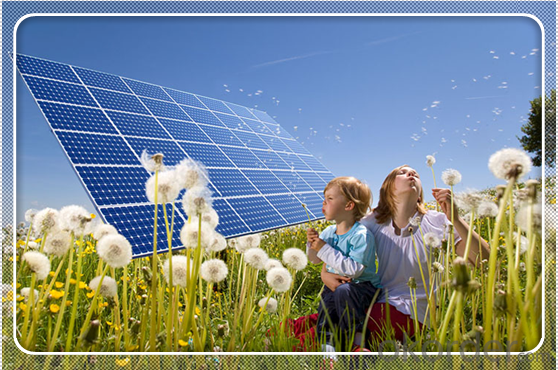
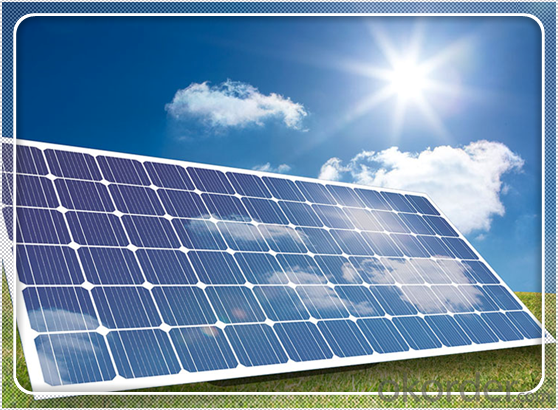
Solar Module Introduction
Solar Module is the core part of solar PV power systems, also is the highest value part of it. The function of Solar Module is to convert the sun's radiation to electrical energy, or transfer it to battery and store in it, or to drive the load running.
The Product has been widely used in space and ground, it mainly used for power generation systems, charging systems, road lighting and traffic signs areas. It could offer a wide range of power and voltage, and with high conversion efficiency, and long service life.
Solar modules use light energy (photons) from the sun to generate electricity through the photovoltaic effect. The majority of modules use wafer-based crystalline silicon cells or thin-film cells based on cadmium telluride or silicon. The structural (load carrying) member of a module can either be the top layer or the back layer. Cells must also be protected from mechanical damage and moisture. Most solar modules are rigid, but semi-flexible ones are available, based on thin-film cells. These early solar modules were first used in space in 1958.
Electrical connections are made in series to achieve a desired output voltage and/or in parallel to provide a desired current capability. The conducting wires that take the current off the modules may contain silver, copper or other non-magnetic conductive transition metals. The cells must be connected electrically to one another and to the rest of the system. Externally, popular terrestrial usage photovoltaic modules use MC3 (older) or MC4 connectors to facilitate easy weatherproof connections to the rest of the system.
Secification
Model Type | |
Peak Power-Pmax(W) | 5-200W |
Open Circuit Voltage-Voc(V) | 44.2 |
Maximum Power Voltage-Vmp(V) | 36 |
Short Circuit Current-Isc(A) | 5.4 |
Maximum Power Current-Imp(A) | 5 |
Maximum System Voltage | 1000V DC |
Maximum Series Fuse Rating | 10A |
Power Tolerance | -1~+3% |
Temperature Coefficients of Pmax | -0.45%/℃ |
Temperature Coefficients of Voc | -0.348%/℃ |
Temperature Coefficients of Isc | 0.031%/℃ |
Nominal Operating Cell Temperature | 44.5±2℃ |
Standard Testing Condition(STC) | Irradiance:1000W/m²;Temperature:25℃;AM=1.5 |
Qualification Test Parameters | |
Operating Temperature | -40℃~+85℃ |
Storage Temperature | -40℃~+85℃ |
Pressure Bearing | ≥5400Pascal/m² |
Wind Bearing | ≥5400Pascal/m² |
Mechanical Characteristics | |
Cell Size | Mono 125*125mm±0.5 |
No.of Cells | 72pcs(6*12) |
Dimension | 1580*808*40mm |
Weight | 15.5Kg |
Glass | 3.2mm High Transmission,Low Iron |
Frame | Anodized Aluminum Alloy |
Junction Box | IP65Rated |
Internal Diodes | 3 Bypass Diodes |
Cable | 1*4.0mm² Length 900mm |
Images
Packing & Shipping:
We have rich experience on how to pack the panels to make sure the safety on shipment when it arrives at the destination.
The normal size is packed by 25pcs/ carton / pallet. Paper carton for FCL shipping and wood carton for LCL shipping.
Warranty:
For c-Si panel: 25years output warranty for no less than 80% of performance, 10 years output warranty for no less than 90% of performance. Free from material and workmanship defects within 5 years.
For a-Si panel: 20 years output warranty for no less than 80% of performance, 10 years output warranty for no less than 90% of performance. Free from material and workmanship defects within 2 years.
FAQ:
(1)What price for each watt?
It depends on the quantity, delivery date and payment terms.
(2)What is your size for each module? Can you tell me the Parameter of your module?
We have different series of panels in different output, both c-Si and a-Si. Please take the specification sheet for your reference.
(3)Can you provide the peripheral products of the solar panels, such as the battery, controller, and inverter? If so, can you tell me how do they match each other?
Actually we are only manufacturer of solar panels, but we could try to source them for you in China if you need. We could provide you an optimal system design to instruct you how to install.
(4)Do you have the CE, TUV, UL Certification?
We’ve already passed all the tests, and any certificate is available.
(5)Have you ever sold your products to companies in my country?
Of course, we have customers in all general PV markets, but I think we should expand our market share along with the market growth.
(6)When did your company set up? You are a new company, how can I believe your quality?
We entered into Solar PV industry in 2005, now we have several plants in manufacturing of a-Si and c-Si panels, and our capacity is 220MW per year. Till now we have already passed all the tests by authorized laboratories, e.g. TUV, VDE, UL.
(7)Can you help us install the module if we cooperate with you?
We haven’t entered into installation sector, but we have the plan in near future.
(8) How do you pack your products?
We have rich experience on how to pack the panels to make sure the safety on shipment when it arrives at the destination.
(9) Can you do OEM for us?
Yes, we can.
(10)Can we visit your factory?
Surely, I will arrange the trip basing on your business schedule.
- Q: What is the payback period for solar panels?
- The payback period for solar panels refers to the time it takes for the savings from reduced energy bills to equal the initial investment in installing the solar panels. The payback period can vary depending on factors such as the cost of the panels, the amount of sunlight in the location, and the local electricity rates. On average, the payback period for solar panels is around 5 to 10 years, but it can be shorter or longer depending on these factors.
- Q: What is the warranty period for solar panels?
- The warranty period for solar panels can vary depending on the manufacturer, but it is typically between 10 to 25 years.
- Q: How do solar panels affect the property's community image?
- Solar panels can have a positive impact on a property's community image by showcasing a commitment to sustainability and renewable energy. They demonstrate that the property owner is environmentally conscious and proactive in reducing their carbon footprint. This can enhance the property's reputation, attract environmentally conscious residents or customers, and potentially inspire others in the community to consider adopting solar energy as well.
- Q: when we say a solar panel has 20% efficiency, do we mean that it converts 20% of sunlight reaching it into electricity or that it converts 20% of visible light(which is only 7% of sunlight) into electricity?
- Sunlight power panels had been the go-to choice for many years. They are among the many oldest, most efficient and most liable methods to produce electrical energy from the solar. Every module is made out of a single silicon crystal, and is more efficient, although more pricey, than the more moderen and less expensive polycrystalline and thin-film PV panel technologies. You can normally appreciate them through their color which is more often than not black or iridescent blue. The silicon crystals have lengthy existence and they may be able to withstand wear and tear with out degrading its workability. Additionally solar is a main source renewable vigour as far as the sunlight method is worried. Sunlight has little influence within the residing creature. So sun panel should be in practice
- Q: Can solar panels be installed on a prison or correctional facility?
- Yes, solar panels can be installed on a prison or correctional facility. Installing solar panels can help reduce the facility's reliance on traditional energy sources and lower its carbon footprint. Additionally, it can save money on electricity costs in the long run. However, there may be certain security considerations and regulations that need to be addressed to ensure the panels do not pose any risks or vulnerabilities.
- Q: How much space do solar panels require?
- The amount of space required for solar panels can vary depending on factors such as the type and size of the panels, their efficiency, and the energy needs of the system. On average, an average-sized residential solar panel system typically requires around 100-400 square feet of roof space. However, ground-mounted systems can require larger areas, and more efficient panels can generate the same amount of electricity in a smaller space.
- Q: Solar panels are expensive,can I make my own solar panel?
- no, not really, they require exotic chemicals and processes. The online outfits that promise to help you build your own are mostly scams. The one I looked at (other answer) seems to just be an assembly guide to put together solar cells into panels. That is fine, but you still have to buy the solar cells, the expensive part. The assembly is just putting them in series/parallel to produce higher voltages and currents. .
- Q: How do solar panels affect roof maintenance?
- Solar panels can have both positive and negative effects on roof maintenance. On the positive side, solar panels can provide an added layer of protection to the roof by shielding it from harmful elements like UV rays, rain, and snow. This can help extend the lifespan of the roof and reduce the need for repairs. However, solar panels can also make roof maintenance more challenging as they need to be regularly cleaned and inspected to ensure optimal performance. Additionally, any repairs or maintenance work on the roof may require temporarily removing the panels, adding an extra step to the process.
- Q: Can solar panels be installed on oil or gas facilities?
- Yes, solar panels can be installed on oil or gas facilities. This practice is known as solar integration and is becoming increasingly common as oil and gas companies aim to reduce their carbon footprint and adopt renewable energy sources. By installing solar panels, these facilities can generate clean electricity and offset some of their energy consumption, leading to reduced greenhouse gas emissions and environmental impact.
- Q: Can solar panels be used in areas with high levels of seismic activity?
- Yes, solar panels can be used in areas with high levels of seismic activity. However, special design considerations and installation techniques may be required to ensure their stability and withstand potential earthquake forces.
Send your message to us
Los Angeles Solar Panels - 110w Efficiency Photovoltaic Chinese Solar Panels for Sale 5-200w
- Loading Port:
- China main port
- Payment Terms:
- TT OR LC
- Min Order Qty:
- 10000 watt
- Supply Capability:
- 100000 watt/month
OKorder Service Pledge
OKorder Financial Service
Similar products
Hot products
Hot Searches
